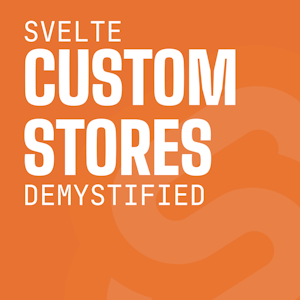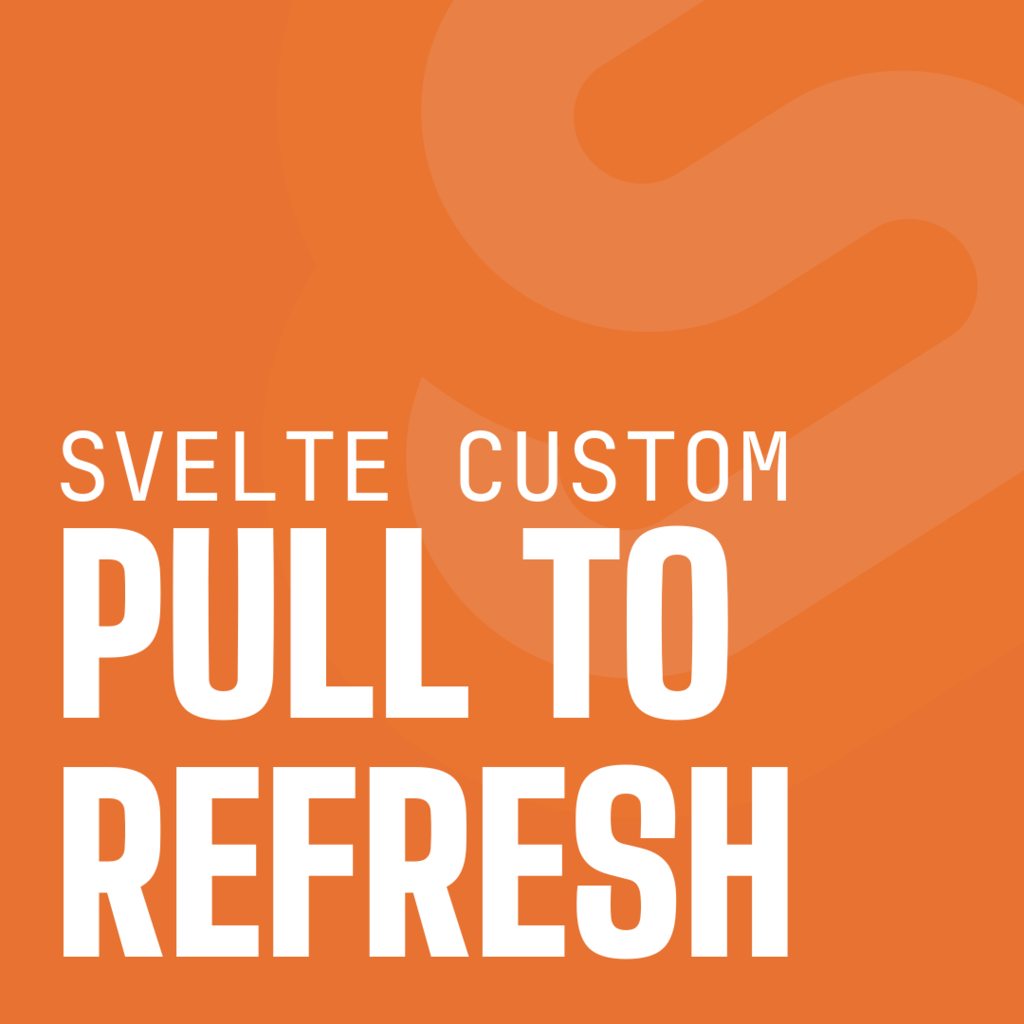By
Raqueebuddin Aziz
September 13, 2022
Freelance Web Designer & Developer

By
September 13, 2022
Freelance Web Designer & Developer
Recently a fellow svelte dev asked me about custom stores, So here I am demystifying svelte stores.
The first half is an intro to svelte stores, feel free to skip to the second half if you are already familiar with stores.
Lots of time when writing applications we might want to know when a certain value is changed and if we change the value we want to tell “everybody” that we changed it. That is what a store helps us to do. Let’s see how.
Let’s not worry about the telling everybody about our changes part right now! We will come back to that later.
Let’s say we have a Store object that has a method named subscribe. Here we have a user store that has properties name and age.
Now we might want to send the user a cool message when they turn 18, so we subscribe to changes to the user store.
The $ in $user in the
callback
is just there to differentiate it from the actual user store.
$user refers to the actual object the store contains that is passed to the callback and user refers to the store wrapping the object.
We pass a callback function to the subscribe method of the user store and the store guarantees that whenever user object changes it will run that callback.
const user = new Store({ name: 'John Doe', age: 18 })
user.subscribe(($user) => {
if ($user.age === 18) {
sendMessage(`Happy Birthday! ${$user.name}`)
}
})
Now we will implement the Store object to tell every subscriber about any changes we make to the data in the store.
Let’s think about how would we go about implementing something like this.
Array for this.set method.subscribe method as we might want to check if the user is already 18 years of age.unsubscribe function from our subscribe function that someone can call to unsubscribe.class Store {
constructor(initialValue = null) {
this.value = initialValue
this.callbacks = []
}
subscribe(callback) {
/* call the callback immediately on subscribe */
callback(this.value)
/* add the callback to list of callbacks */
this.callbacks.push(callback)
/* return a function to unsubscribe */
return () => this.unsubscribe(callback)
}
unsubscribe(callback) {
this.callbacks = this.callbacks.filter((cb) => cb !== callback)
}
set(value) {
this.value = value
/* call all the callbacks registered */
for (const callback of this.callbacks) {
callback(this.value)
}
}
}
There it is you just implemented the svelte writable store from scratch.
Although I am certain this is not the most performant implementation, but this is exactly what the svelte writable does on a high level.
Finally, what you are here for.
If you add any arbitrary logic in subscribe, unsubscribe or set method of the Store object we created you just created a custom store.
Get it? It’s a store that does something custom somewhere in the store.
Let us look at some examples.
import { writable } from 'svelte/store'
function darkModeStore() {
const darkMode = window.matchMedia('(prefers-color-scheme: dark)')
/* set the value immediately in writable initialValue */
const { set, subscribe, update } = writable(darkMode.matches)
/* start listening to user preference changes and update the value */
darkMode.addEventListener('change', () => set(darkMode.matches))
return {
subscribe
}
}
const darkMode = darkModeStore()
This is a store whose value is true if user has dark mode on otherwise false.
You will see some new things here.
First we are not implementing subscribe and set ourselves rather we are getting it from the svelte writable, this is a common practice when writing custom stores as you probably don’t want to implement those methods from scratch but extend their functionality.
Second we are returning only a subscribe function and no set function, this is legal and preferred if you want the store to be read only from the user’s perspective, and in this case as the value of the store represents something that is outside our control like user preference we want the store to be read only.
import { writable } from 'svelte/store'
function checkType(value, typeName) {
if (typeof value !== typeName)
throw new Error(`provided value ${value} has type ${typeof value} expected ${typeName}`)
}
function enforceType(initialValue, typeName) {
checkType(initialValue, typeName)
const { set, subscribe, update } = writable(initialValue)
return {
subscribe,
set(value) {
checkType(value, typeName)
set(value)
}
}
}
const age = enforceType(18, 'number')
This is a store which takes two parameters an initialValue and a typeName and makes sure that the value of the store always has that type.
This particular implementation only works for
primitive values.
Here we also return a set function that checks the type before updating the value of the store.
function createCount() {
const { subscribe, set, update } = writable(0)
return {
subscribe,
increment: () => update((n) => n + 1),
decrement: () => update((n) => n - 1),
reset: () => set(0)
}
}
This example I stole from the awesome svelte tutorial.
It’s a store that is something in between a readable store and a writable store.
It provides the required subscribe method but rather than providing a generic set method it provides increment, decrement and reset which allows modification of the value but restricts the modifications to three operations.
This is an extremely common pattern while writing svelte stores as this leads to better guarantees about the value stored leading to fewer chances for bugs down the line.
So there it is custom stores demystified, now you have an amazing new tool in your arsenal to write apps.
What will you use custom stores for? Leave a comment down below
 Svelte Custom Pull To Refresh
Svelte Custom Pull To Refresh We use cookies to enhance your browsing experience and analyze website traffic. By continuing to use our website, you consent to the use of cookies in accordance with our Privacy Policy.